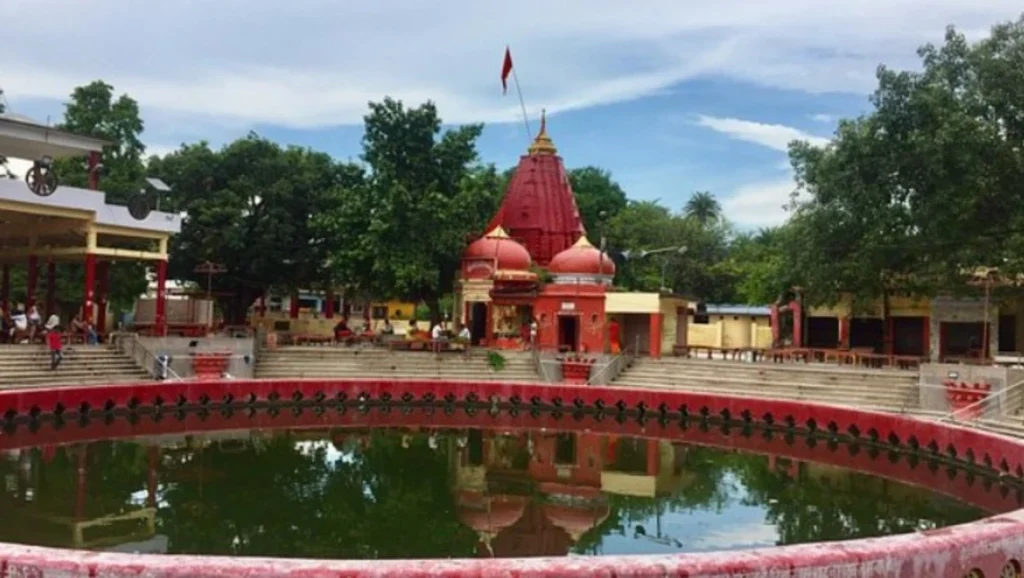Discover Kannauj, Uttar Pradesh – the perfume capital of India, rich in heritage, history, and culture. Explore its ancient temples, forts, and fragrances!

Explore Kannauj Where History Fragrance & Culture Thrive
Kannauj district, located in the northern Indian state of Uttar Pradesh, is a region steeped in historical significance and cultural richness. With a land area of approximately 2,063 square kilometers, this district is known for its diverse heritage, aromatic perfumes, and historical sites.
The district’s history dates back to ancient times when it was known as Kanyakubja, with references in Hindu mythology and scriptures. It has witnessed the rise and fall of various empires and dynasties, contributing to its cultural amalgamation. The remnants of these eras can be seen in the form of historical monuments and architectural marvels that grace the district.
Renowned for its perfumes, Kannauj has earned the title of “Perfume City of India.” The art of making fragrances has been passed down through generations, creating a unique olfactory identity for the district. The extraction of natural oils from flowers like roses, jasmine, and tuberose is a traditional practice that continues to thrive. The fragrances produced here are sought after both nationally and internationally, adding to the district’s economic significance.
The district’s landscape is dotted with various places of historical and cultural importance. The Annapurna Temple, dedicated to the goddess of food, is a sacred site that draws devotees and tourists alike. The Jama Masjid, a splendid example of Mughal architecture, stands as a testament to the district’s diverse religious fabric. Additionally, the archaeological site of Sankisa presents a glimpse into the Buddhist heritage of the region.
Kannauj’s traditional crafts extend beyond perfumery. The art of itr or traditional Indian perfume-making is complemented by the production of exquisite attars, essential oils, and rose water. These products are not only vital to the local economy but also reflect the district’s identity.
The district’s economy revolves around agriculture, with crops like wheat, sugarcane, and mustard being cultivated in abundance. The Gangetic plain’s fertile soil, coupled with an extensive network of canals, facilitates agricultural activities. Additionally, industries such as distilleries, sugar mills, and perfumery units contribute significantly to the district’s economic growth.
Kannauj district also faces its share of challenges. Like many other regions in India, it grapples with issues of infrastructure development, healthcare facilities, and education. However, efforts are underway to address these concerns and uplift the overall quality of life for the residents.
Famous Places in Kannauj district
Kannauj district in Uttar Pradesh, India, is adorned with a plethora of famous places that showcase its historical and cultural significance. From ancient temples to architectural marvels, here are some of the notable attractions:
Annapurna Temple: A revered Hindu temple dedicated to Goddess Annapurna, the deity of food. This sacred site attracts pilgrims and visitors seeking blessings.
Jama Masjid: A stunning example of Mughal architecture, the Jama Masjid is a mosque that reflects the district’s diverse religious heritage.
Sankisa: An archaeological site that offers insights into the Buddhist legacy of the region, featuring ancient ruins and relics.
Kannauj Fort: A historical fort that stands as a testimony to the district’s rich past. Though in ruins, it holds stories of bygone eras.
Ajai Dam: A serene water reservoir offering a peaceful escape, perfect for picnics and relaxation.
Gauri Shankar Temple: This ancient temple dedicated to Lord Shiva boasts intricate carvings and architecture that attracts devotees and history enthusiasts.
Perfume Distilleries: Kannauj is renowned as the “Perfume City of India.” Visiting the perfume distilleries provides a unique experience to witness the traditional art of fragrance-making.
Rajghat Dam: Another popular water reservoir that offers boating and scenic views, creating an ideal spot for outdoor activities.
Dewar Wildlife Sanctuary: Nature enthusiasts can explore this sanctuary, home to a variety of flora and fauna, offering an opportunity for birdwatching and eco-tourism.
Baikuntheshwar Mahadev Temple: Nestled near the banks of the Ganges River, this temple dedicated to Lord Shiva offers a tranquil atmosphere for spiritual seekers.
Kaleshwar Temple: A significant religious site that attracts pilgrims due to its historical importance and religious significance.
Sheikhupur Sarai: A historical sarai (inn) built during the Mughal era, which served as a resting place for travelers and traders.
Rajendra Smriti Sangrahalaya: A museum showcasing the history and cultural heritage of Kannauj through artifacts, sculptures, and historical documents.
Amanat Khan Tomb: A historical tomb dedicated to Amanat Khan, a renowned musician during the Mughal period, known for his mastery of the sarod.
These famous places collectively paint a vivid picture of Kannauj’s rich past, its blend of architectural styles, and its contribution to India’s cultural diversity. Whether you’re interested in history, spirituality, or simply exploring the district’s unique offerings, Kannauj has something captivating for every traveler.
Read More :-
